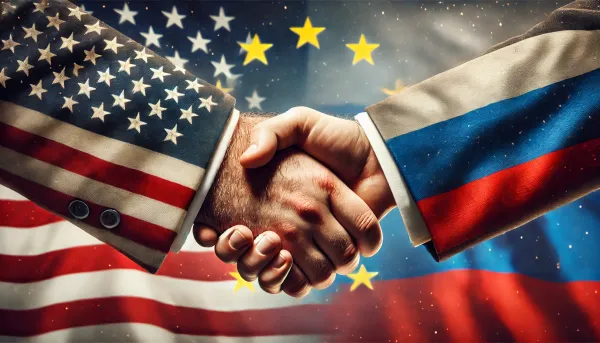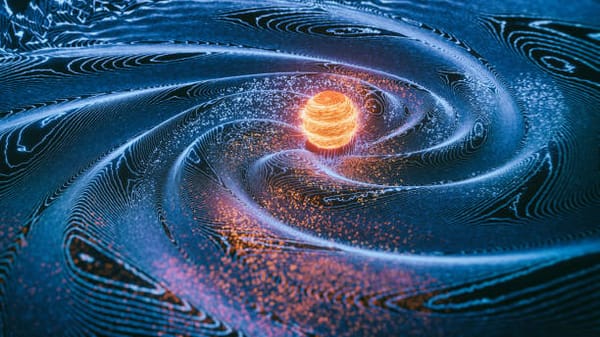Burning Man Decoded: Clearing Up Common Misunderstandings
Burning Man was first held in 1986 on a San Francisco beach when a group of friends burned a wooden effigy. It has since evolved into a large-scale event in the Black Rock Desert.
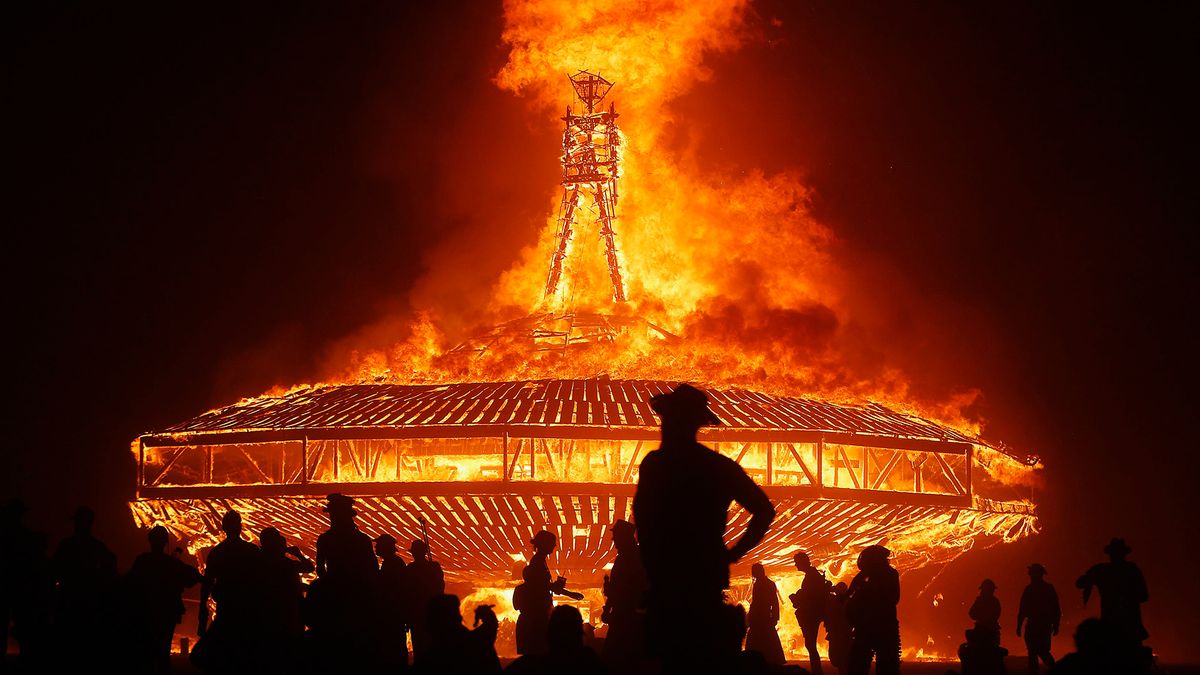
Introduction
Every year, an otherworldly city rises from the Nevada desert, capturing the imagination of thousands. Burning Man, a week-long event that defies conventional definitions, is a celebration of radical self-expression, community, and art. In this blog, we'll delve into the essence of Burning Man, exploring its history, principles, and the profound impact it has on those who experience it. We're also taking a closer look at some of the misunderstandings to shed light on what Burning Man truly is: a celebration of art, community, and radical self-expression.
The Origin Story
Burning Man was born in 1986 when a small group of friends gathered on a San Francisco beach to burn a wooden effigy as a form of self-expression and catharsis. Little did they know, this act would give birth to one of the most unique cultural phenomena of our time. The event eventually moved to the Black Rock Desert, where it transformed into a temporary city, Black Rock City, welcoming tens of thousands of participants each year.
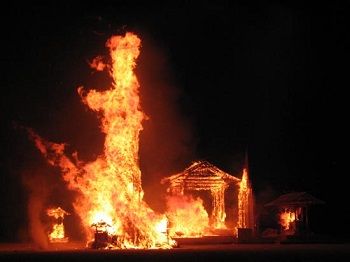
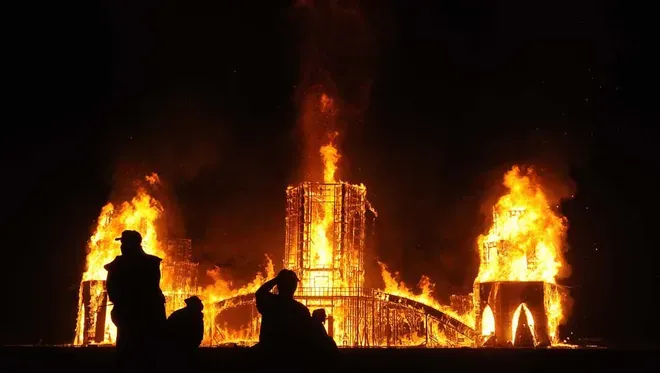
Into the Heart of Burning Man
Imagine building a temple in the desert for something you believe in. Learn cool skills like fire spinning, pole dancing, or making unique jewelry. You can even go to a special school where you can study made-up subjects. Picture dancing in a tutu at a party near a place that serves grilled cheese sandwiches.

Or think about making a huge sculpture of two people hugging and then burning it down. Artists did just that in 2014 – Kevan Christiaens, Kelsey Owens, Bill Tubman, Joe Olivier, Matt Schultz, and the Pier Group.
All these exciting things happen in a temporary city called Burning Man, where around 80,000 people gather every year. It's like a festival that's starting again from August 27 to September 4 in the Nevada desert. And when it ends, the whole city disappears as if it was never there – that's part of the plan.
Burning Man in 2023
This year, a tropical storm called Hilary caused some trouble. There were strong winds, rain, and even floods in the desert. People who were getting ready for Burning Man had to wait for the wet ground to dry. The storm also made building the special temple, named 'The Temple of the Heart,' a bit harder. The ground was muddy, so construction got delayed.
The theme for the 2023 Burning Man festival is 'Animalia.' This theme is about celebrating animals, both real and imaginary, and thinking about how we fit into the animal world. It's also about exploring how we sometimes believe things that might not be true, like imagining animals that aren't real or forgetting that we are part of the animal kingdom too.
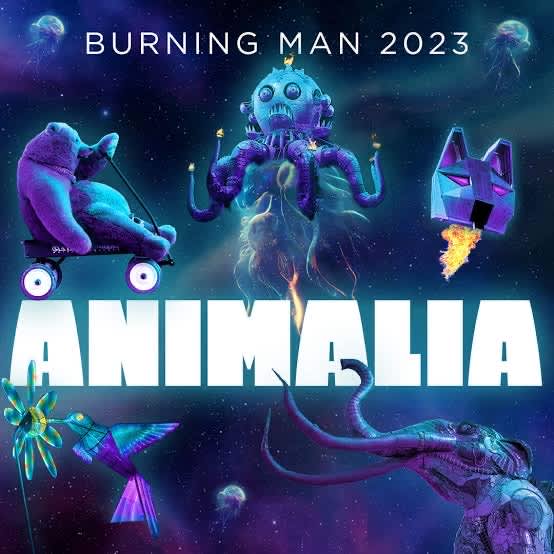
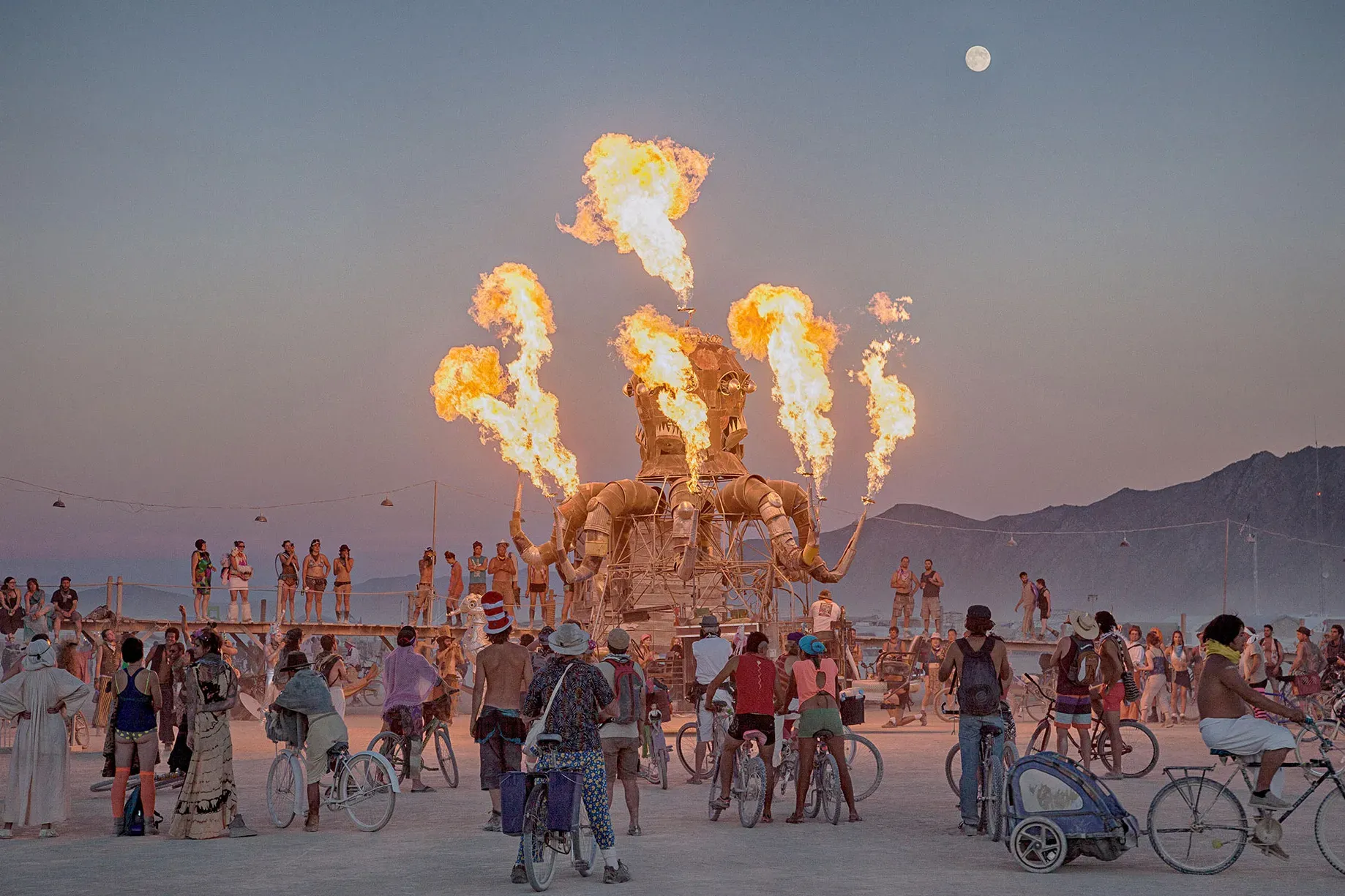
It is a special event where people come together. They create art and build a community. The event is named after a big totem that is set on fire at the end. The people who come to Burning Man follow ten important ideas written by one of its founders, Larry Harvey. These ideas include giving things without expecting anything in return, welcoming everyone, and taking care of the community and the environment.
Principles that Define Burning Man
At the core of Burning Man are ten principles that shape its culture and community. These principles include Radical Inclusion, Gifting, Decommodification, Radical Self-Reliance, Radical Self-Expression, Communal Effort, Civic Responsibility, Leaving No Trace, Participation, and Immediacy. These ideals guide Burners in their interactions, creations, and experiences, fostering an environment where self-discovery and connection flourish.
Art is the lifeblood of Burning Man, with the event becoming a massive canvas for creativity. In the desert, towering sculptures, intricately designed installations, and mind-bending interactive art pieces dot the landscape. The ephemeral nature of these creations—most of which are burned at the end of the event—speaks to the impermanence of life and the beauty of letting go.
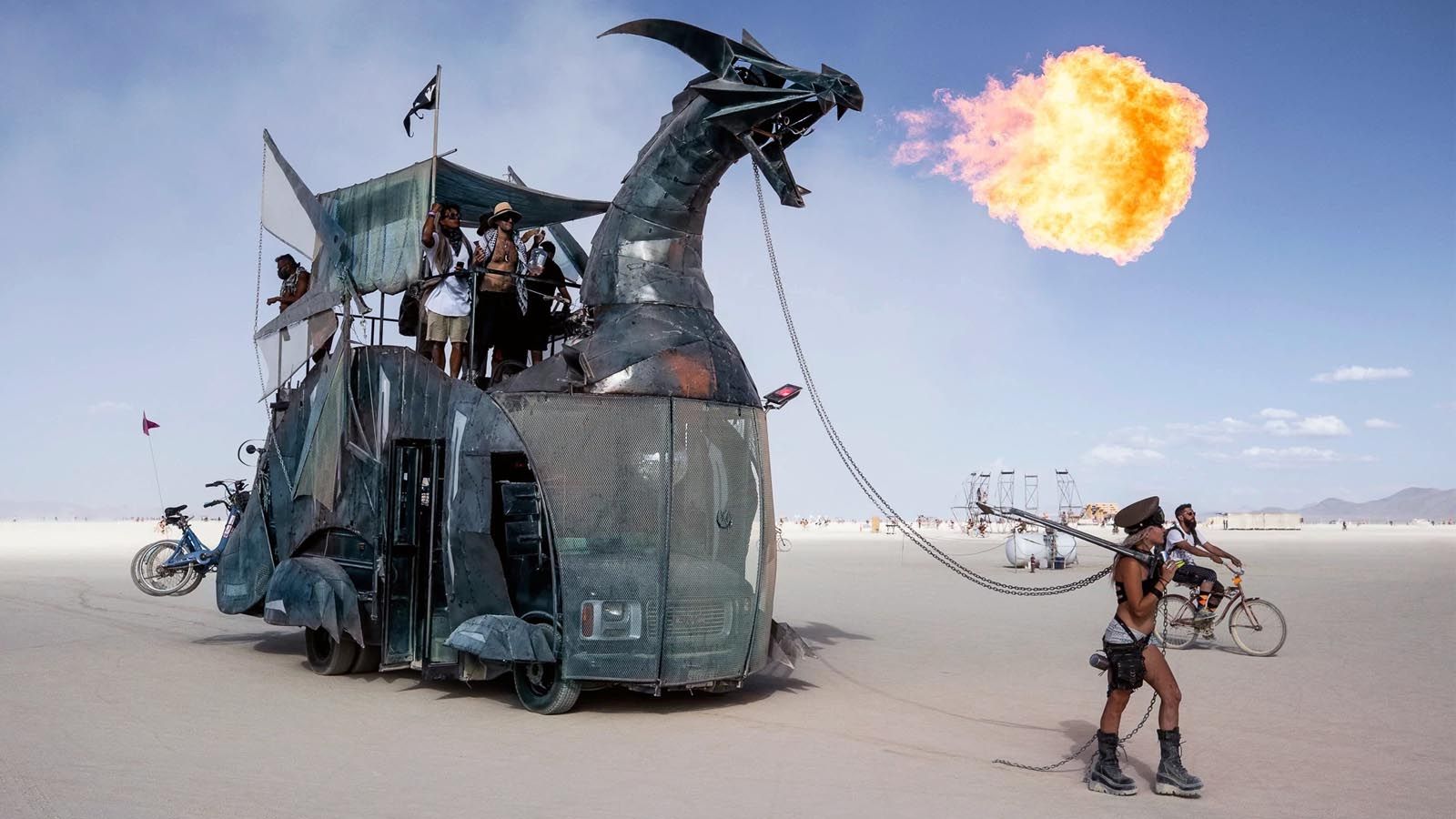
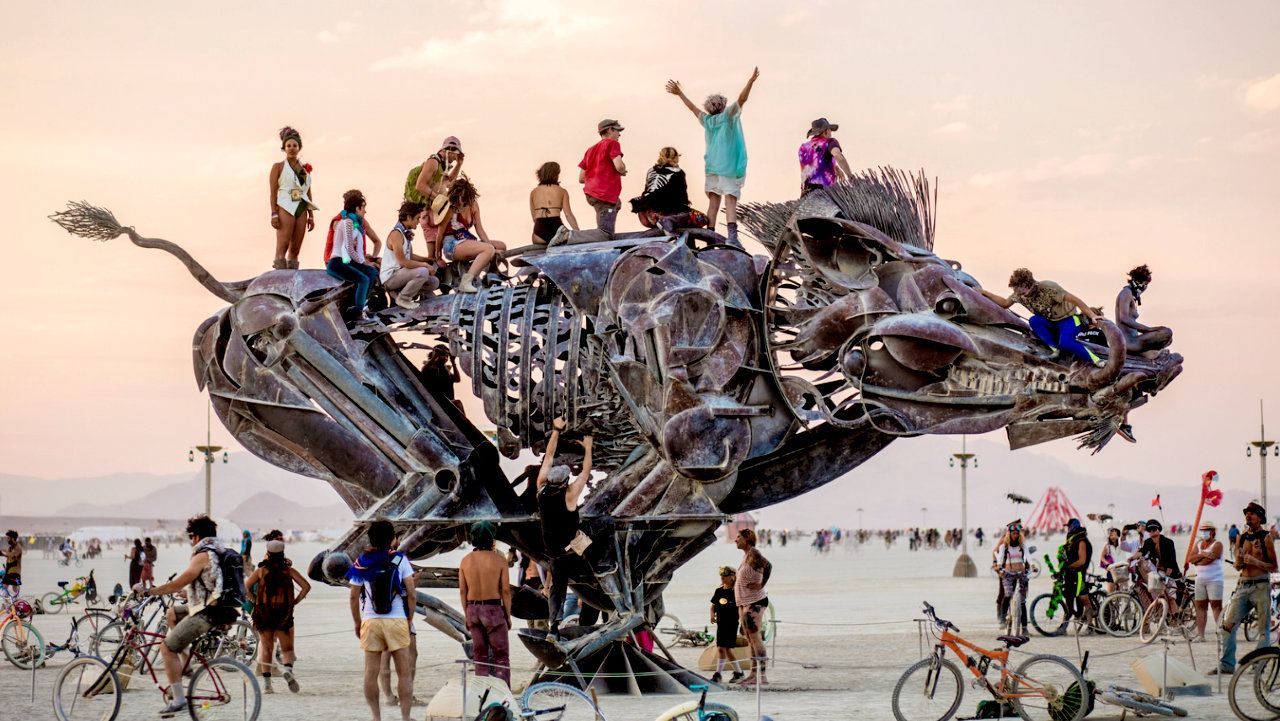
Burning Man is more than a festival; it's a participatory experience. Attendees are encouraged to shed their everyday identities and immerse themselves in the event's ethos. They become co-creators, engaging in spontaneous acts of kindness, artistic expression, and connection. The boundary between performer and audience dissolves, giving rise to a sense of unity and shared humanity.
While the burning of the Man is a central ritual, the true essence of Burning Man transcends the fiery spectacle. It's about embracing vulnerability, pushing personal boundaries, and finding a community where acceptance knows no bounds. The event offers a rare opportunity to disconnect from the digital world and connect with others on a deeper level, fostering relationships that can last a lifetime.
Throughout its history, Burning Man has been surrounded by certain misunderstandings, which we'll address and clarify in the following sections.
Misconception 1: A Wild Party in the Desert
One of the most common misconceptions about Burning Man is that it's nothing more than a massive desert rave. While music and celebration are part of the experience, reducing Burning Man to just a party overlooks its core principles. The event is about creating a temporary community where participants engage in a wide range of artistic and interactive experiences, embracing the ten guiding principles that emphasize self-reliance, creativity, and inclusion.
Misconception 2: An Anything-Goes Free-for-All
Some believe that Burning Man is a lawless space where societal norms don't apply. In reality, the event has a set of guidelines and principles that participants are expected to follow. These principles, like "Leave No Trace" and "Civic Responsibility," are designed to foster a sense of accountability and respect for both the environment and fellow participants.
Misconception 3: Only for Hippies and Artists
While Burning Man does attract artists and free spirits, its diverse community spans a broad spectrum of backgrounds and professions. Engineers, doctors, entrepreneurs, and people from all walks of life converge to participate in the event. This diversity of thought and experience is what contributes to the richness of the Burning Man experience.
Misconception 4: A Commercial Festival
Contrary to the assumption that Burning Man is a commercial endeavor, the event is intentionally anti-commercial. The principle of "Decommodification" emphasizes valuing experiences over transactions. This means you won't find vendors selling products or corporate advertising within Black Rock City. Instead, participants are encouraged to give and share without expecting anything in return.
Misconception 5: All About the Burn
While the symbolic burning of the Man is a significant moment, focusing solely on this fiery spectacle misses the broader picture. Burning Man is about the journey, the community, and the personal transformations that occur during the event. The art, the interactions, and the connections are what truly define the experience.
FAQs
What is banned at Burning Man?
Larger stand-up scooters, fat tire scooters, gas-powered bicycles, powered quadricycles, ATVS, mopeds, and motorcycles are not allowed inside the Burning Man event.
Is Burning Man kid-friendly?
Children of all ages are welcome, however, anybody under 18 years of age must be accompanied by a ticketed parent or legal guardian.
How many days is Burning Man?
Burning Man is an annual event that takes place in Black Rock City in Northwest Nevada. For nine days each year.
Conclusion
Burning Man is not just an event; it's a journey into self-discovery, artistry, and human connection. It challenges societal norms and encourages participants to reimagine their lives in the context of its principles. Beyond the myths and misconceptions lies a space where individuals can explore their innermost selves, surrounded by a community that embraces them for who they are. As the desert winds carry away the ashes of burnt art, they also carry the memories and transformations of those who experienced the magic of Burning Man.


